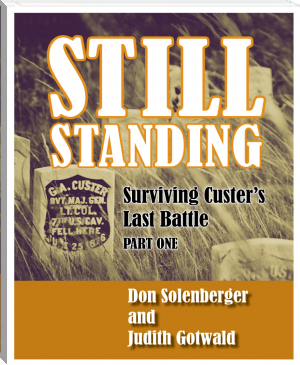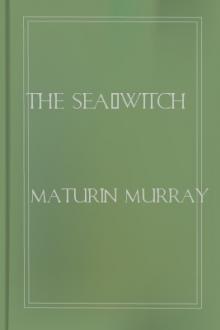The Mariner of St Malo by Stephen Leacock (books to read for teens .TXT) 📖

- Author: Stephen Leacock
- Performer: -
Book online «The Mariner of St Malo by Stephen Leacock (books to read for teens .TXT) 📖». Author Stephen Leacock
‘And after that, upon August 15,’ so ends Cartier’s narrative, ‘being the feast of the Assumption of our Lady, after that we had heard service, we altogether departed from the port of Blanc Sablon, and with a happy and prosperous weather we came into the middle of the sea that is between Newfoundland and Brittany, in which place we were tossed and turmoiled three days long with great storms and windy tempests coming from the east, which with the aid and assistance of God we suffered: then had we fair weather, and upon the fifth of September, in the said year, we came to the port of St Malo whence we departed.’
THE SECOND VOYAGE—THE ST LAWRENCE
The second voyage of Jacques Cartier, undertaken in the years 1535 and 1536, is the exploit on which his title to fame chiefly rests. In this voyage he discovered the river St Lawrence, visited the site of the present city of Quebec, and, ascending the river as far as Hochelaga, was enabled to view from the summit of Mount Royal the imposing panorama of plain and river and mountain which marks the junction of the St Lawrence and the Ottawa. He brought back to the king of France the rumour of great countries still to be discovered to the west, of vast lakes and rivers reaching so far inland that no man could say from what source they sprang, and the legend of a region rich with gold and silver that should rival the territory laid at the feet of Spain by the conquests of Cortez. If he did not find the long-sought passage to the Western Sea, at least he added to the dominions of France a territory the potential wealth of which, as we now see, was not surpassed even by the riches of Cathay.
The report of Cartier’s first voyage, written by himself, brought to him the immediate favour of the king. A commission, issued under the seal of Philippe Chabot, admiral of France, on October 30, 1534, granted to him wide powers for employing ships and men, and for the further prosecution of his discoveries. He was entitled to engage at the king’s charge three ships, equipped and provisioned for fifteen months, so that he might be able to spend, at least, an entire year in actual exploration.
Cartier spent the winter in making his preparations, and in the springtime of the next year (1535) all was ready for the voyage.
By the middle of May the ships, duly manned and provisioned, lay at anchor in the harbour of St Malo, waiting only a fair wind to sail. They were three in number—the Grande Hermine of 120 tons burden; a ship of 60 tons which was rechristened the Petite Hermine, and which was destined to leave its timbers in the bed of a little rivulet beside Quebec, and a small vessel of 40 tons known as the Emerillon or Sparrow Hawk. On the largest of the ships Cartier himself sailed, with Claude de Pont Briand, Charles de la Pommeraye, and other gentlemen of France, lured now by a spirit of adventure to voyage to the New World. Mace Jalobert, who had married the sister of Cartier’s wife, commanded the second ship. Of the sailors the greater part were trained seamen of St Malo.
Seventy-four of their names are still preserved upon a roll of the crew. The company numbered in all one hundred and twelve persons, including the two savages who had been brought from Gaspe in the preceding voyage, and who were now to return as guides and interpreters of the expedition.
Whether or not there were any priests on board the ships is a matter that is not clear. The titles of two persons in the roll—Dom Guillaume and Dom Antoine—seem to suggest a priestly calling. But the fact that Cartier made no attempt to baptize the Indians to whom he narrated the truths of the Gospel, and that he makes no mention of priests in connection with any of the sacred ceremonies which he carried out, seem to show that none were included in the expedition. There is, indeed, reference in the narrative to the hearing of mass, but it relates probably to the mere reading of prayers by the explorer himself.
On one occasion, also, as will appear, Cartier spoke to the Indians of what his priests had told him, but the meaning of the phrase is doubtful.
Before sailing, every man of the company repaired to the Cathedral Church of St Malo, where all confessed their sins and received the benediction of the good bishop of the town. This was on the day and feast of Pentecost in 1535, and three days later, on May 19, the ships sailed out from the little harbour and were borne with a fair wind beyond the horizon of the west. But the voyage was by no means as prosperous as that of the year before.
The ships kept happily together until May 26. Then they were assailed in mid-Atlantic by furious gales from the west, and were enveloped in dense banks of fog. During a month of buffeting against adverse seas, they were driven apart and lost sight of one another.
Cartier in the Grande Hermine reached the coast of Newfoundland safely on July coming again to the Island of Birds. ‘So full of birds it was,’ he writes, ‘that all the ships of France might be loaded with them, and yet it would not seem that any were taken away.’ On the next day the Grande Hermine sailed on through the Strait of Belle Isle for Blanc Sablon, and there, by agreement, waited in the hope that her consorts might arrive. In the end, on the 26th, the two missing ships sailed into the harbour together. Three days more were spent in making necessary repairs and in obtaining water and other supplies, and on the 29th at sunrise the reunited expedition set out on its exploration of the northern shore. During the first half of August their way lay over the course already traversed from the Strait of Belle Isle to the western end of Anticosti. The voyage along this coast was marked by no event of especial interest. Cartier, as before, noted carefully the bearing of the land as he went along, took soundings, and, in the interest of future pilots of the coast, named and described the chief headlands and landmarks as he passed. He found the coast for the most part dangerous and full of shoals. Here and there vast forests extended to the shore, but otherwise the country seemed barren and uninviting.
From the north shore Cartier sailed across to Anticosti, touching near what is now called Charleton Point; but, meeting with head winds, which, as in the preceding year, hindered his progress along the island, he turned to the north again and took shelter in what he called a ‘goodly great gulf full of islands, passages, and entrances towards what wind soever you please to bend.’ It might be recognized, he said, by a great island that runs out beyond the rest and on which is ‘an hill fashioned as it were an heap of corn.’ The ‘goodly gulf’ is Pillage Bay in the district of Saguenay, and the hill is Mount Ste Genevieve.
From this point the ships sailed again to Anticosti and reached the extreme western cape of that island. The two Indian guides were now in a familiar country. The land in sight, they told Cartier, was a great island; south of it was Gaspe, from which country Cartier had taken them in the preceding summer; two days’ journey beyond the island towards the west lay the kingdom of Saguenay, a part of the northern coast that stretches westwards towards the land of Canada. The use of this name, destined to mean so much to later generations, here appears for the first time in Cartier’s narrative. The word was evidently taken from the lips of the savages, but its exact significance has remained a matter of dispute. The most fantastic derivations have been suggested. Charlevoix, writing two hundred years later, even tells us that the name originated from the fact that the Spaniards had been upon the coast before Cartier, looking for mines. Their search proving fruitless, they kept repeating ‘aca nada’
(that is ‘nothing here’) in the hearing of the savages, who repeated the words to the French, thus causing them to suppose this to be the name of the country. There seems no doubt, however, that the word is Indian, though whether it is from the Iroquois Kannata, a settlement, or from some term meaning a narrow strait or passage, it is impossible to say.
From Anticosti, which Cartier named the Island of the Assumption, the ships sailed across to the Gaspe side of the Gulf, which they saw on August 16, and which was noted to be a land ‘full of very great and high hills.’
According to the information of his Indian guides, he had now reached the point beyond which extended the great kingdom of Saguenay. The northern and southern coasts were evidently drawing more closely together, and between them, so the savages averred, lay a great river.
‘There is,’ wrote Cartier in his narrative, ‘between the southerly lands and the northerly about thirty leagues distance and more than two hundred fathoms depth. The said men did, moreover, certify unto us that there was the way and beginning of the great river of Hochelaga, and ready way to Canada, which river the farther it went the narrower it came, even unto Canada, and that then there was fresh water which went so far upwards that they had never heard of any man who had gone to the head of it, and that there is no other passage but with small boats.’
The announcement that the waters in which he was sailing led inward to a fresh-water river brought to Cartier not the sense of elation that should have accompanied so great a discovery, but a feeling of disappointment. A fresh-water river could not be the westward passage to Asia that he had hoped to find, and, interested though he might be in the rumoured kingdom of Saguenay, it was with reluctance that he turned from the waters of the Gulf to the ascent of the great river. Indeed, he decided not to do this until he had tried by every means to find the wished-for opening on the coast of the Gulf.
Accordingly, he sailed to the northern shore and came to the land among the Seven Islands, which lie near the mouth of the Ste Marguerite river, about eighty-five miles west of Anticosti,—the Round Islands, Cartier called them. Here, having brought the ships to a safe anchorage, riding in twenty fathoms of water, he sent the boats eastward to explore the portion of the coast towards Anticosti which he had not yet seen. He cherished a last hope that here, perhaps, the westward passage might open before him. But the boats returned from the expedition with no news





Comments (0)